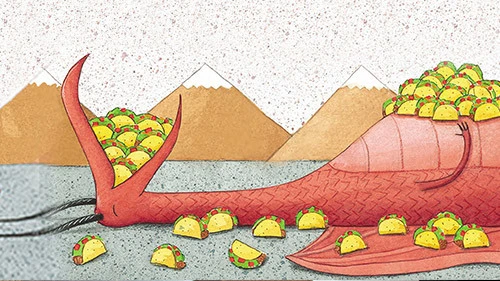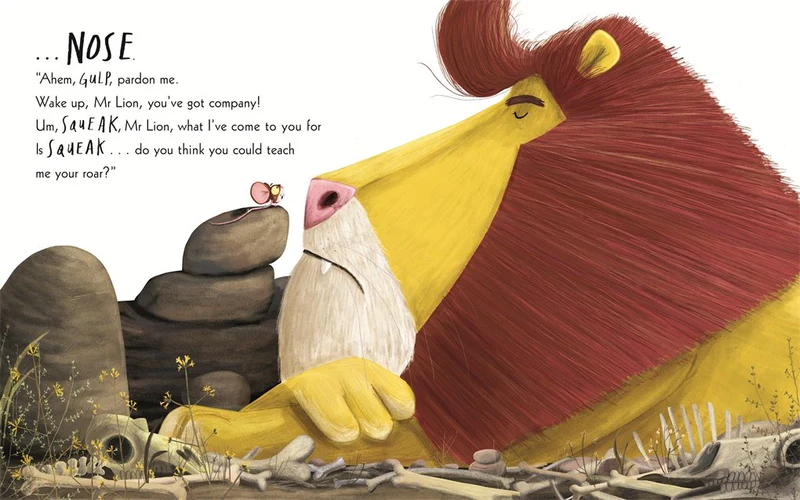A Few Brave Kids Battle a Toxic World

If flu-pandemic books make cold sufferers anxious and zombie books make agoraphobics jittery, here’s something to rattle the Zyrtec set.
You name an allergy, and adolescent Anaya in Kenneth Oppel’s BLOOM (Knopf, 320 pp., $16.99; ages 10 and up) has it. Gluten, eggs, milk, smoke, dust — all of these things aggravate her acne. Anaya’s gorgeous ex-BFF Petra doesn’t have zit issues, but her allergy is a rare and lethal one: water. New kid Seth is allergic to life in general: Being shuttled between foster families who don’t want you sucks.
Then rain falls upon their Canadian home of Salt Spring Island. A peculiar rain. It clears Anaya’s skin and Petra isn’t allergic to it. In the hours that follow, the farm Seth tends with his current fosters, Mr. and Mrs. Antos, sprouts an invasive species of tall, black, spiky grass.
Soon it’s popping up all over the world, outgrowing even kudzu. Picture the xenomorph from “Alien,” only leafier. It destroys lawn mower blades. Cutting it releases acid. Burning it generates toxic fumes. And everyone seems to be allergic to it — except Anaya, Petra and Seth, who haven’t felt this lively in ages.
This meek trio seems poised to inherit the earth. But what kind of earth will it be? The plants undergo hideous developments. Twisting, grabbing vines. Fleshy sacs that open to gobble birds — yep, they’re carnivorous. Worst of all are the pit plants lurking underground. Once a sports field yawns open and begins swallowing kids and teachers, the book rockets off, and Oppel never eases up on the gas.
Oppel has spent a career hopping genres. His “Silverwing” series tackled fantasy, his “Airborn” series alt-history and his “Apprenticeship of Victor Frankenstein” series horror. This first volume in the “Overthrow” series giddily stampedes the fields of sci-fi, and Oppel has a ball wringing the concept of all its sap. Roots, flowers, seeds — no element of plant life is left unweaponized.
The book owes an obvious debt to John Wyndham’s 1951 killer-plant classic “The Day of the Triffids,” though Scott Smith’s “The Ruins” and a gnarly segment of George A. Romero’s “Creepshow” also come to mind. With climate change teetering on irreversibility, today seems ripe for nature-versus-human fiction — and it might be hard not to root for nature.
Thankfully, Oppel’s heroes are impossible to dislike. Though imbued with the outsize pluckiness of many middle grade characters, they also display a shifting mix of self-doubt, confidence, pissiness and delight. Oppel draws them with rich minimalism.
Anaya “wanted to believe that, one day, she’d bloom.” For Petra, “being pretty was like armor — it was the only thing between herself and her fears.” And Seth’s past abuse is alluded to with finespun grace, as when Mr. Antos “put his hand briefly on Seth’s shoulder. It didn’t feel like other hands that had been placed on him.”
A final-third plot development references a different Wyndham novel, “The Midwich Cuckoos” (filmed twice as “Village of the Damned”), as the three kids’ bodies mutate. This might deflate those basking in the trio’s refreshing normalcy, but Oppel is savvy about how body horror applies to puberty-age kids. At first, their changes are alarming, even repugnant. But slowly, they feel the power inherent in maturation. It’s a tough element to introduce amid breakneck action, but Oppel’s handling of it is pleasantly unpleasant.
There is nothing especially deep to this story. But these are deep times, and readers will have no choice but to overlay their current Covid-19 experiences on Oppel’s chillingly prescient details: the initial blaming of China, a shrinking work force gutted by sickness, closed schools, stay-at-home orders, overloaded hospitals and the omnipresence of medical masks.
It is a helpless situation with which readers will powerfully identify. How cathartic to imagine a few brave kids might turn it all around. This makes “Bloom” the perfect book right now for young readers searching for hope, strength, inspiration — and just a little horticultural havoc.




